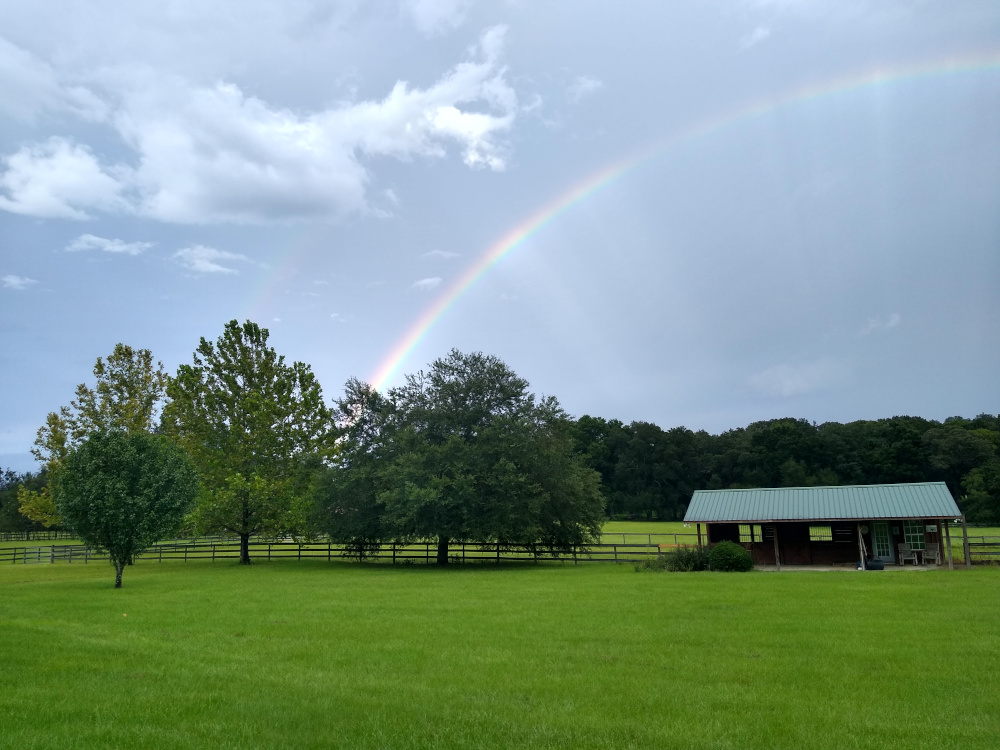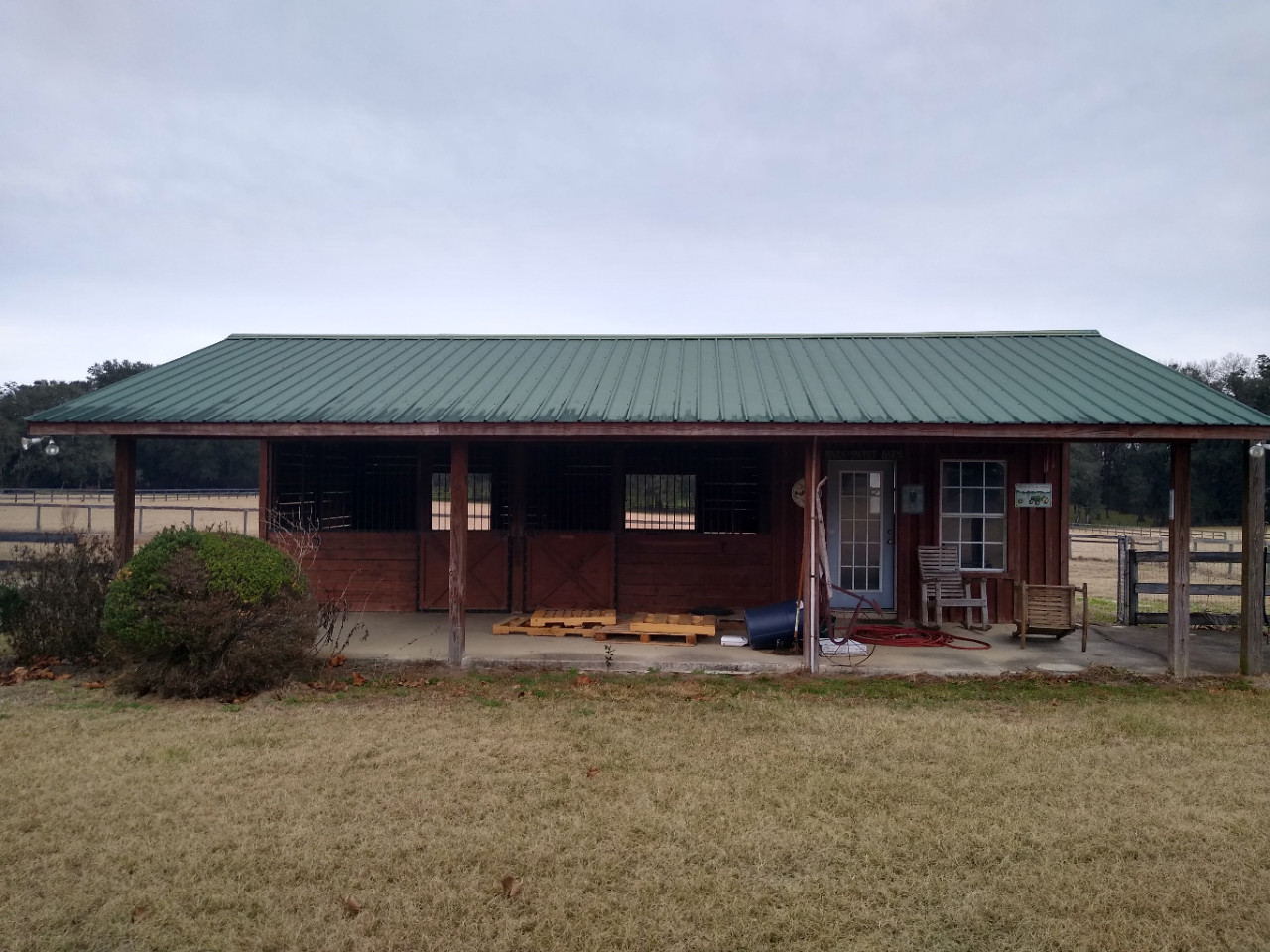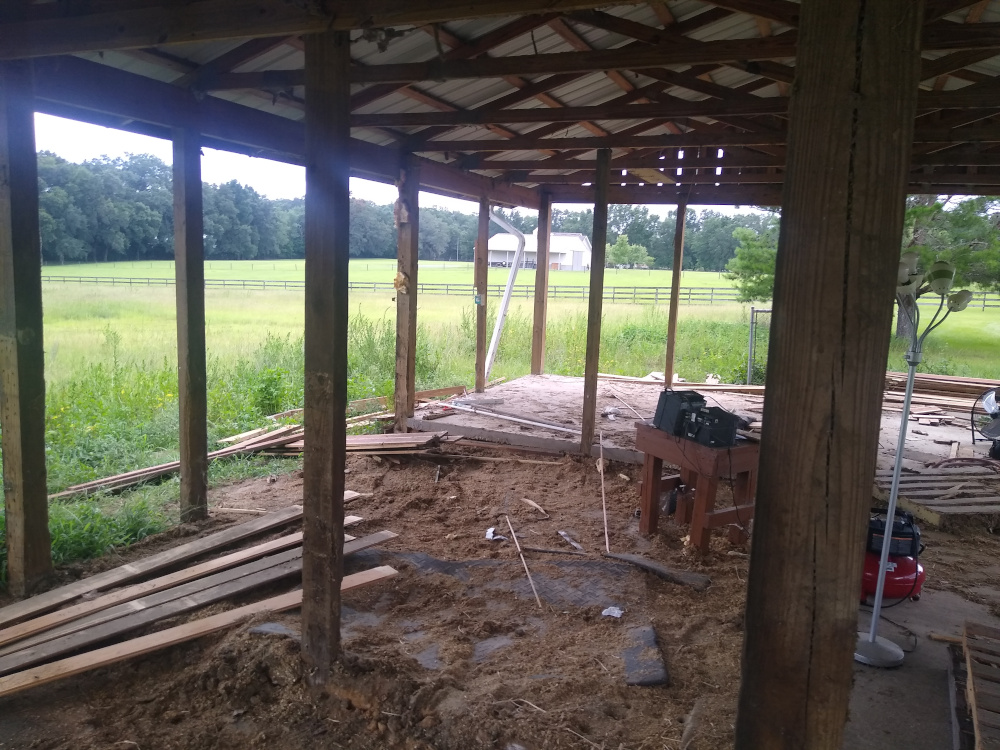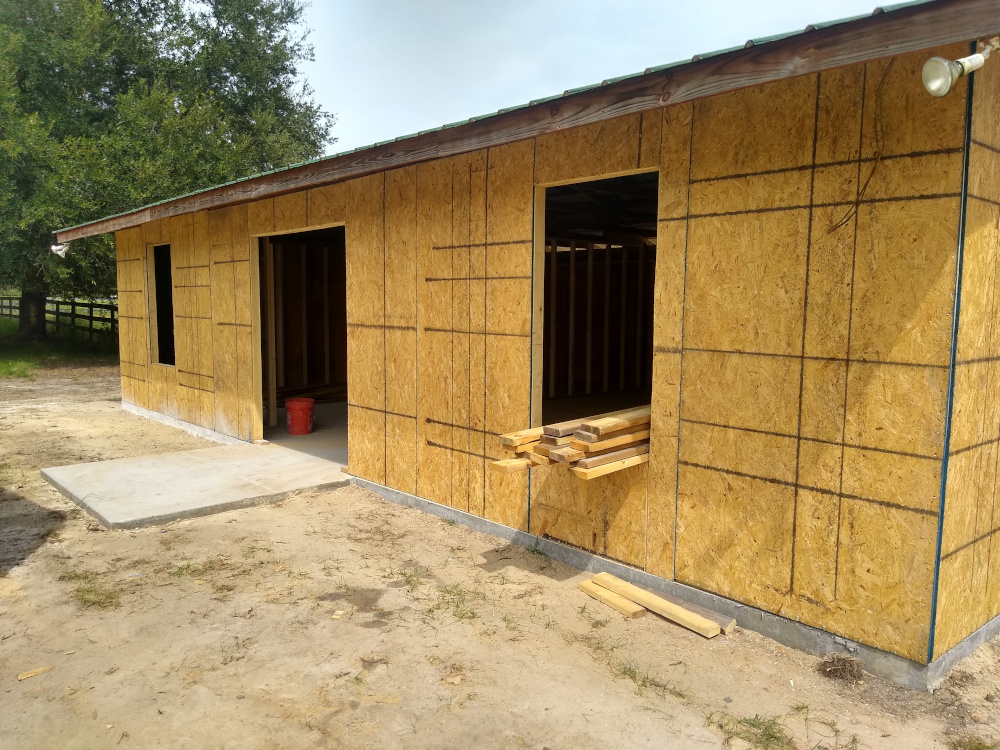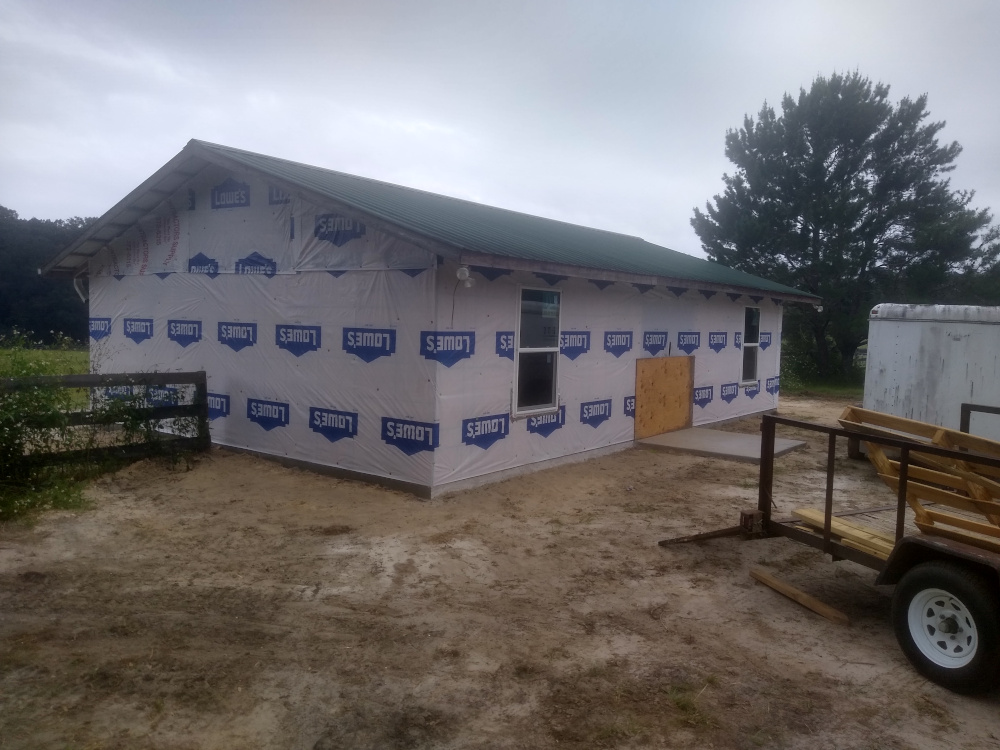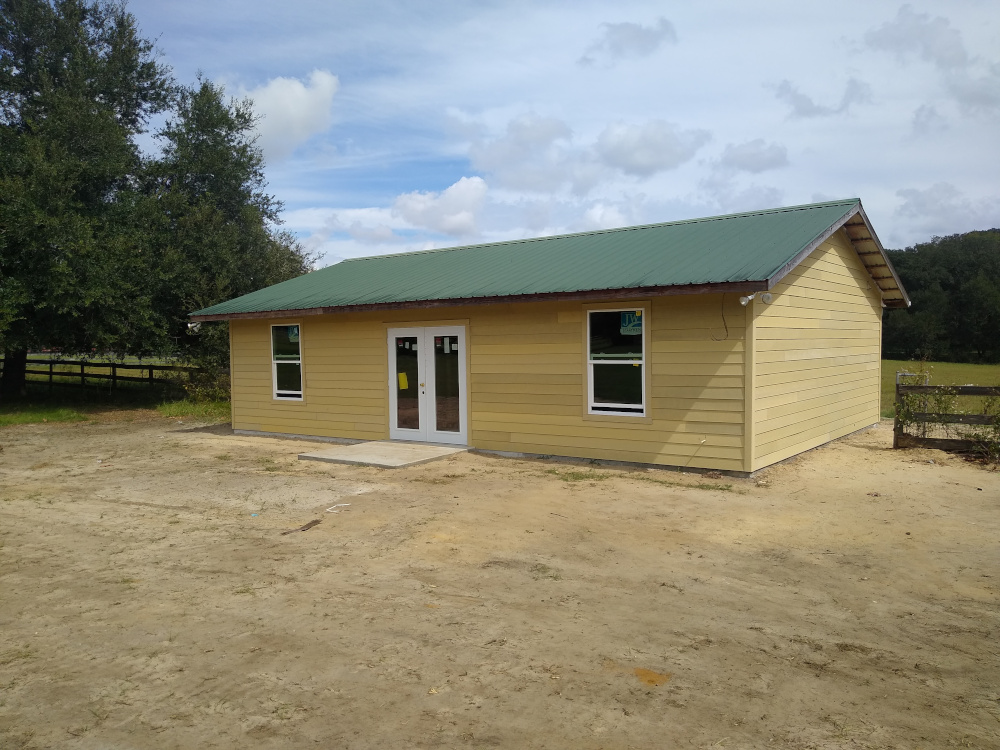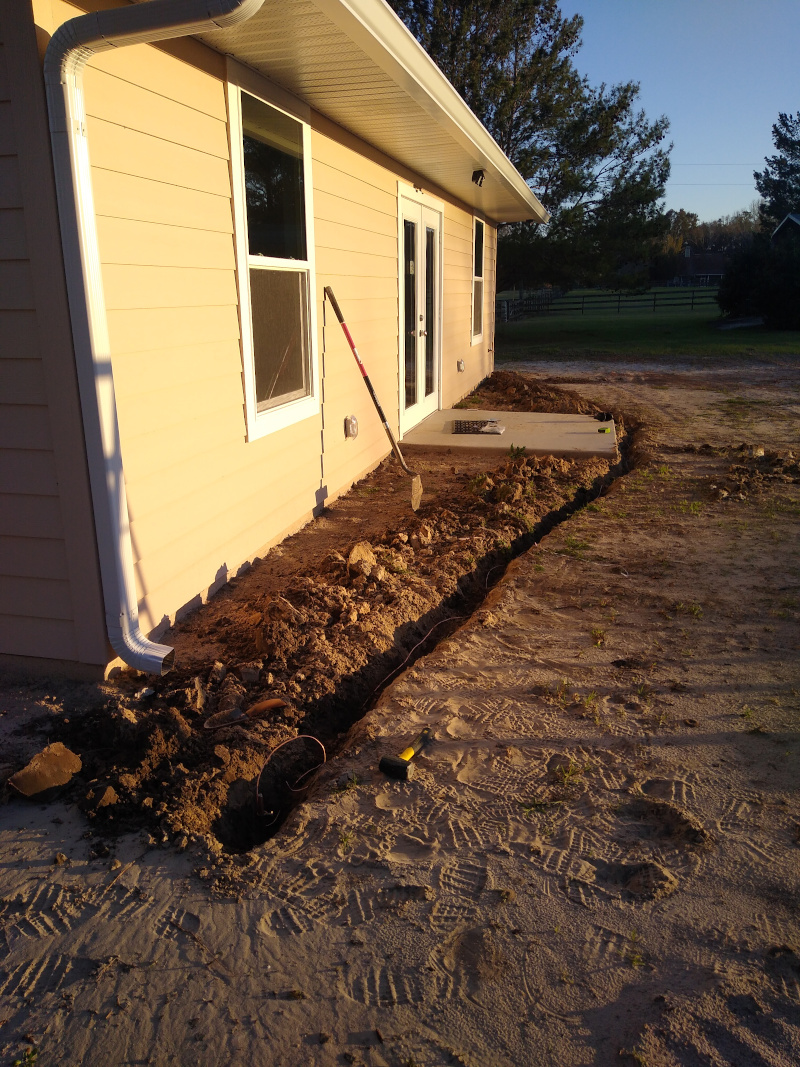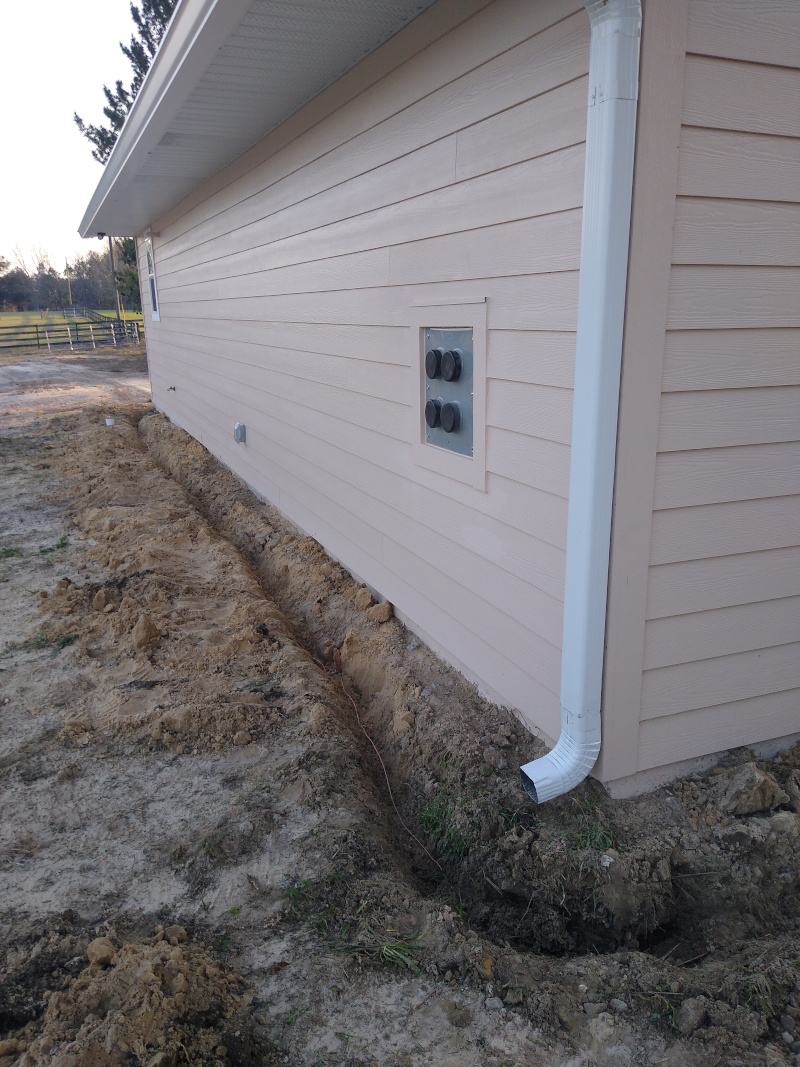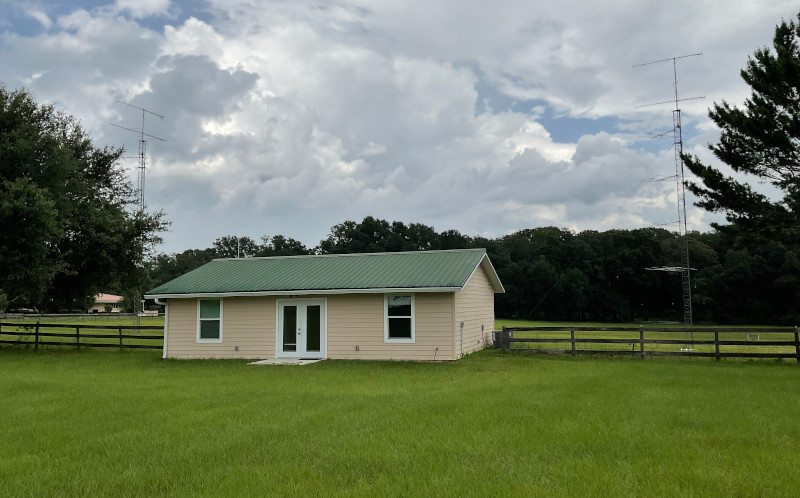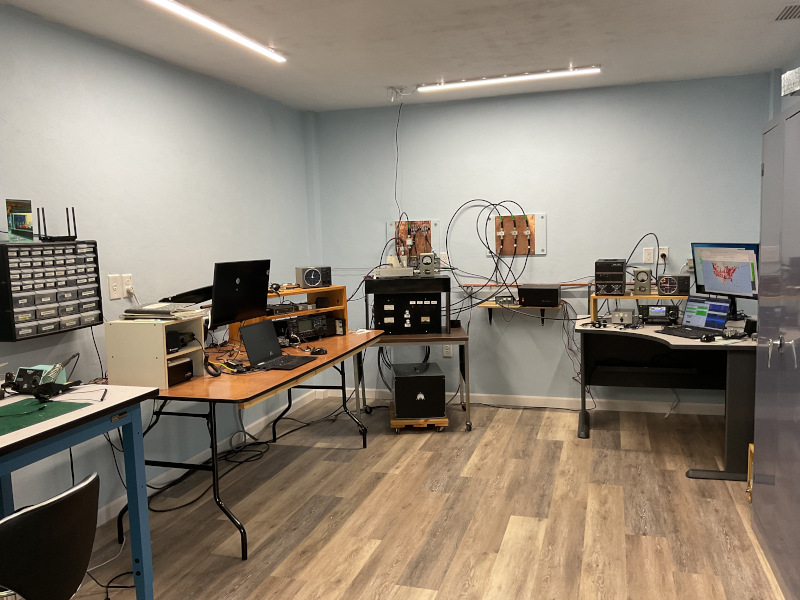Our property is a 10-acre former horse ranch located in a semi-rural area of grid EL89. This was much more land than we were looking for, but it seemed that 9 out of 10 available properties had some sort of HOA with tower restrictions. We are enjoying the extra space, quiet surroundings, and privacy.
The hamshack is a converted pole barn located about 125 ft behind our house. The original owners used it to stable their two horses named Cytosa and Islacolada. To the immediate right of the stalls is a small tack room. A fenced-off paddock is partially visible behind the structure. I was going to need a lot of clear space for the guyed towers and have no interest in owning horses, so our neighbor Bob helped me remove the paddock fencing in the spring of 2021.
Starting the building rennovation project proved to be very difficult because general contractors were in short supply in 2021. I called probably three dozen, chased a variety of leads, but only managed to get six to come to the property to assess the job. Their consensus was that the main structure and metal roof were of high integrity and could be used as the framework for a re-model. Complete teardown was not necessary.
A contractor who was building homes in the area gave a verbal commitment and connected us with his architect in Gainesville. The drawings took more than three months to prepare and cost $2250, but the contractor decided to back out by the time the design work was finished. I was now the owner of some very expensive plans but without anybody willing to do the construction.
Another general contractor was eventually hired in the June 2022 and got to work on demolition and securing the needed permits with the city and county. The ubiquitous government red-tape resulted in lengthy delays and required re-scheduling of some sub-contractors. Although the city allowed us to install a bathroom, they would not permit a second sink or separate service connection to the transformer on the adjacent utility pole. We had to run a buried feeder line from the main house to keep both structures on the same meter. That represented a lot of copper and wasn't cheap. Water also comes from a well shared with the house, but the shack has its own septic system. The pictures below show some of the site preparation along with the new concrete slab in the process of curing.
The exterior walls, windows, and doors were in place by late September 2022. Hardie board horizontal siding followed two weeks later.
I run kW+ amplifiers, so having sufficient electrical power is essential. The service panel in the shack is rated at 100 A; it supplies four separate 220 VAC lines: three at 20 A and one at 30 A. These are all on individual breakers. There is an abundance of 120 VAC outlets because — as the old saying goes — you can never have too many. I also had the electrician mount four 120 VAC outlets in weather-proof enclosures on the exterior walls. A pair of spotlights hang from the soffit at each corner of the building. There are two water spigots available on the front and back. These were helpful in getting the grass started after the construction was completed.
The total enclosed area is about 864 square feet. An interior wall divides the inside of the building into a separate hamshack/workshop and a larger living room area with a 3/4 bathroom. There is also a small storage closet and a closed-off space to hold the hot water heater and HVAC equipment. The right photo above shows part of the freshly-painted interior with the vinyl flooring installed and the cable feedthrough panel from Site Pro 1 attached to the exterior wall. Drywall and ceiling painting were accomplished in one day; this was a three-man effort of me, Hal (WA4QLA), and Steve (W4IT).
Perimeter Ground
To attain a high level of lightning protection, I put in a perimeter ground. A thorough description of why this is important and how to implement it can be found in the ARRL Grounding and Bonding book by N0AX. Because this hamshack is an out-building, code mandates that the neutral bus and ground bus are NOT connected at the sub-panel. Neutral and ground are electrically connected to at least one buried ground rod back at the main panel where the utility power line enters the house.
Before the grass had established itself, I dug a 12-inch deep trench that completely surrounds the remodeled building. Buried in the trench is 6-gauge bare copper wire that is tied to seven 8-ft long ground rods, spaced at roughly 16-ft, i.e. twice their length. The perimeter ground enters the building at two points: i) at the sub-panel through a separate 1/2 inch conduit (right photo below) where it connects to AC ground and ii) at the cable feedthrough ports near the radio equipment and operating position (center photo below, conduit not yet installed). To re-emphasize: Ground and neutral are electrically isolated at the sub-panel.
The completed rennovation as of July 2024 is shown below. Inside the shack, there are two operating positions: 144/222 MHz on the left and 50 MHz on the right. All feedlines and cabling are routed through lightning arrestors mounted to grounding panels on the inside back wall. Copper strap connects the panels to a copper pipe ground bus and the perimeter ground.
